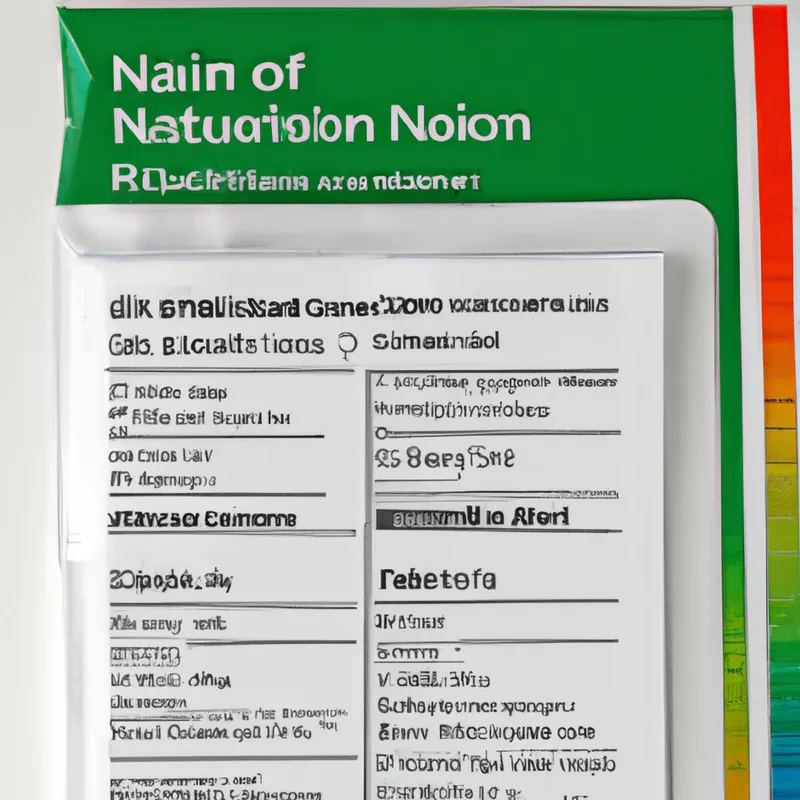Navigate Nutrition Labels for Better Choices
How to Read Nutrition Labels for Micronutrient Content
Understanding nutrition labels helps you make informed food choices. Micronutrients, such as vitamins and minerals, support overall health. Learning to read these labels empowers you to select foods that meet your dietary needs. This guide helps you navigate nutrition labels effectively.
What Are Micronutrients?
Micronutrients include vitamins and minerals that support various bodily functions. They contribute to immune health, bone strength, and energy production. Our bodies need micronutrients in smaller amounts than macronutrients like carbohydrates and proteins. However, they remain crucial for our well-being.
Key Components of Nutrition Labels
Nutrition labels provide essential information about the food you consume. Focus on several key components when examining micronutrient content.
Serving Size
First, check the serving size at the top of the label. This number indicates how much food constitutes one serving. It helps you understand the micronutrients you receive per serving. For example, one serving of cereal may contain 25% of your daily value (DV) for iron. If you eat two servings, you double that percentage.
Percent Daily Value (%DV)
Next, look at the %DV for each micronutrient. This percentage shows how much a nutrient contributes to your daily diet based on a 2,000-calorie intake. A %DV of 20% or more signifies high nutrient content, while 5% or less indicates a low level. Use this information to assess if the food meets your micronutrient needs.
Vitamins and Minerals
Focus on the vitamins and minerals listed on the label. Common micronutrients include Vitamin A, Vitamin C, calcium, and iron. Different nutrients serve various purposes in the body. For instance, Vitamin C boosts your immune system, while calcium strengthens bones. Pay attention to the amounts present in your food choices.
Tips for Reading Nutrition Labels
Reading nutrition labels can seem daunting at first. With practice, you can become proficient. Here are some tips to simplify the process.
Compare Products
When shopping, compare similar products. For example, if you choose between two cereal brands, check their micronutrient content. One brand may offer higher levels of Vitamin D or calcium than the other. Make your decision based on the nutrients that matter most to you.
Focus on Your Needs
Consider your individual dietary needs. Are you vegetarian, pregnant, or trying to build muscle? Each situation may require different micronutrient focuses. For instance, pregnant women need more folic acid and iron. Tailor your food selections to meet these requirements.
Don’t Forget About Ingredients
In addition to micronutrient content, check the ingredient list. Foods with whole ingredients typically offer better nutritional value. Avoid highly processed items that may lack essential vitamins and minerals. Prioritize whole grains, fruits, and vegetables whenever possible.
Benefits of Understanding Micronutrient Content
Reading nutrition labels is not just about numbers; it’s about making smarter choices. Understanding micronutrient content offers several benefits.
Improved Health
Knowing your micronutrient intake can lead to improved health. Adequate levels of vitamins and minerals support your immune system and overall wellness. By choosing nutrient-dense foods, you can prevent deficiencies that may lead to health issues.
Better Food Choices
Understanding nutrition labels allows you to make better food choices. When you know what to look for, you can select foods that align with your health goals. For instance, if you aim to increase your iron intake, you can choose foods that provide higher percentages of this crucial mineral.
Enhanced Awareness
Reading nutrition labels fosters greater awareness of what you consume. This knowledge helps you develop healthier eating habits over time. Awareness leads to informed decisions, which can positively impact your long-term health.
Conclusion
Reading nutrition labels for micronutrient content is essential for maintaining a balanced diet. Focus on serving sizes, %DV, and the specific vitamins and minerals listed to make informed choices. Use these tips to enhance your understanding and tailor your food selections to meet your individual needs. As you become more aware of your micronutrient intake, you can improve your overall health. Start today and empower yourself to make better food choices!
Below are related products based on this post:
FAQ
What are the most important micronutrients to look for on nutrition labels?
Common micronutrients to focus on include Vitamin A, Vitamin C, calcium, and iron. Each of these serves different functions in the body, such as boosting the immune system or strengthening bones. Pay attention to the amounts of these nutrients present in your food choices to ensure you’re meeting your dietary needs.
How can I determine if a food is high or low in micronutrients based on the %DV?
The %DV (Percent Daily Value) on nutrition labels indicates how much a nutrient contributes to your daily diet based on a 2,000-calorie intake. A %DV of 20% or more signifies high nutrient content, while a %DV of 5% or less indicates a low level. Use this information to assess whether the food meets your micronutrient needs.
What should I consider when comparing different food products?
When comparing food products, check their micronutrient content, especially if you have specific dietary needs. Look for differences in levels of important vitamins and minerals, such as Vitamin D or calcium. Tailor your choices based on the nutrients that are most significant for your health goals, whether you’re vegetarian, pregnant, or looking to build muscle.















Post Comment